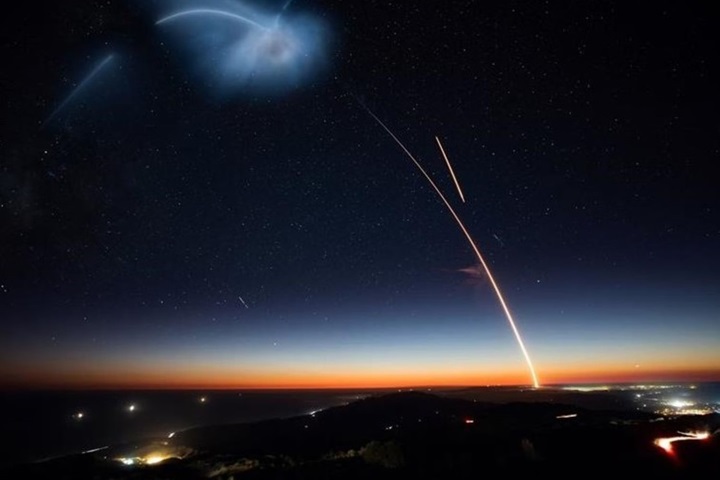Schadenfreude is defined as ‘pleasure derived by someone from another person’s misfortune.’ It’s a powerful phenomenon.
Of course, it’s also powerful to learn from others’ mistakes. As part of our analysis celebrating 20 years of Kantar BrandZ valuations, we examined a range of failed and failing brands. We found many commonalities and lessons for any brand.
And yes, we found plenty of schadenfreude too. In the sense that when we present brand success stories to clients, they’re well received, but when we include tales of woe from fallen competitors, people really sit up and take notice. Maybe this reflects the highly competitive nature of marketing. Or maybe it speaks to something deeper: a fear of failure sharpening awareness of what must be avoided. Whatever the reason, this phase of the project has been illuminating.
So let’s examine five examples of brand failures from the past 20 years, identify the shared mistakes and how to guard against them.
Kodak: what digital revolution?
In the 1960s, Kodak held a near-monopoly on the photography market, renowned for its high-quality film and cameras; by 2012, the company was declared bankrupt.
Kodak had built a highly profitable business model centered on selling inexpensive cameras and capitalizing on film and processing charges. Executives saw digital photography as a threat rather than an opportunity, meaning the brand missed out on leading a major technological shift, allowing competitors in. Kodak held a large portfolio of valuable patents related to digital imaging, but it was slow to monetize them, meaning competitors established dominant positions in digital photography.
Blockbuster: drowned in the streaming flood
Blockbuster Video started in 1985 and quickly grew popular. By the late 1980s, Blockbuster expanded rapidly through franchising, acquisitions and partnerships, becoming a nationwide US chain. By the early 2000s, the brand was at its peak with over 9,000 stores worldwide, making it the dominant force in movie rentals.
However, as online streaming services like Netflix emerged, the brand was slow to adapt. Amazingly, in 2000, Blockbuster had the opportunity to purchase Netflix for around $50 million, but declined to do so, eventually declaring bankruptcy in 2010.
Myspace: well and truly Zuckered
From 2005 to 2009, Myspace was the largest social networking site in the world, surpassing Yahoo! and Google to become the most visited website in the US, generating $800 million.
The brand initially grew rapidly, but struggled to keep up with the evolving demands of users. Its interface became cluttered and difficult to navigate, and it failed to innovate features, design, and functionality.
After an initial focus on US college students, Facebook opened to a much broader audience, offering a sleeker, more focused platform. As smartphones emerged, Myspace failed to establish a high-quality mobile experience.
Blackberry: bitten by the Apple
Specializing in business email, BlackBerry was well known for its distinctive keyboards. At its peak in 2011, there were 85 million BlackBerry subscribers worldwide. By 2016, the brand exited the smartphone market altogether. BlackBerry was slow to move away from its iconic, but outdated keyboard design and late to touchscreen—allowing iPhone and Android devices to capitalize. The brand also failed to keep up with industry trends, like media consumption and social networking. And while iPhone and Android introduced quality cameras and app integration, BlackBerry’s innovations were seen as insufficient.
Tupperware: sealed in a box
Tupperware became famous for its direct marketing strategy, with sellers hosting ‘Tupperware parties.’ The brand’s focus continued to remain on direct sales, with a peak sales force of 1.9 million people across 82 countries by 2007. This approach became outdated with the rise of online shopping and ecommerce, leading to declining sales. With the rise of new competitors offering more eco-friendly, often cheaper and more innovative storage solutions, Tupperware struggled for relevance. Slow to innovate in product, design and marketing strategy, the brand was declared bankrupt in 2024.
Common themes and implications—what do all these brands have in common?
1. Inflexible business model
Don’t resist change for fear of disrupting an existing business model. Pivot when necessary – the market will evolve regardless.
2. Resistance to technology
Embrace new technology and grasp opportunities to innovate and differentiate.
3. Losing sight of consumer needs
Consumer preferences will change – maintaining consumer-centricity is critical.
4. Complacency and dismissal of emerging competitors
Respect and regularly assess competitors; no brand is too big to fail, nor too small to succeed.
5. Reliance on recognition and awareness
Invest in establishing predisposition—represent something beyond product. Monitor brand health and focus on KPIs that matter.
These cautionary tales show that no brand is immune to challenge, decline and failure. The true survivors anticipate change, embrace reinvention and reinvigorate. Brand builders, beware! Heed these lessons and don’t allow your brand to become our next serving of schadenfreude!
The 20th anniversary edition of Kantar BrandZ’s Most Valuable Global Brands rankings and report are now available at www.kantar.com/campaigns/brandz/global
For a quick read on a brand’s performance compared to competitors in a specific category, Kantar’s free interactive tool, BrandSnapshot powered by BrandZ, provides intelligence on 14,000 brands. Find out more here.



